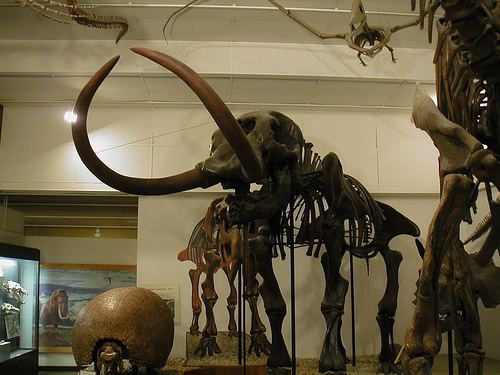Phone +1 608-262-2399 | ||
 | ||
Address 1215 W Dayton St, Madison, WI 53706, USA Hours Open today · 8:30AM–4:30PMThursday8:30AM–4:30PMFriday8:30AM–4:30PMSaturday9AM–1PMSundayClosedMonday8:30AM–4:30PMTuesday8:30AM–4:30PMWednesday8:30AM–4:30PMSuggest an edit Similar Allen Centennial Gardens, Madison Children's Museum, University of Wisconsi, Chazen Museum of Art, Wisconsin Veterans Museum Profiles | ||
The UW–Madison Geology Museum (UWGM) is a geology and paleontology museum housed in Weeks Hall, in the southwest part of the University of Wisconsin–Madison campus. The museum's main undertakings are exhibits, outreach to the public, and research. It has the second highest attendance of any museum at the University of Wisconsin–Madison, exceeded only by the Chazen Museum of Art. The museum charges no admission.
Contents
History
The museum was founded in the 19th century, and for many years resided with the earth science departments in Science Hall. After the construction of Weeks Hall in the 1970s, the museum moved to its present location in 1981.
Exhibits
Almost 1,000 items are on display in 66 exhibits covering 3,000 square feet (280 m2). Major sections are devoted to rocks and minerals, invertebrate and fish fossils, and vertebrate fossils. There are also cases of glaciers, meteorites, and fossil plants.
Highlights of the museum include:
Rocks
Fossils
Biosignatures exhibit
This exhibit highlights the chronology of the Earth and the signal left by life on the planet. Features include
Extraterrestrial exhibits
Outreach
Every year hundreds of school groups from around the state tour the museum, led by student guides. Staff and students at the museum also travel to schools in the area to teach children and their teachers about geology.
The museum hosts periodic family events, such as the annual Open House. These sometimes have a special theme, such as the one in 2006 that focused on pterosaurs and in 2009 on the Mazon Creek fossils which includes the Tully Monster (Tullimonstrum gregarium).
Research
The museum has conducted fossil digs in many Western states. The Late Cretaceous Niobrara Formation in Kansas has yielded many marine fossils. The Hell Creek Formation in Montana and South Dakota has produced duck-billed, horned, and tyrannosaurid dinosaurs, as well as some noteworthy fish.
There is an ongoing summer dig in the Jurassic Morrison Formation in Wyoming, which has produced sauropod and theropod dinosaurs, as well as other remarkable vertebrates.
The museum also conducts local research, such as the study of Pleistocene mammal fossils from Midwestern caves.
Collections
Like most museums, the Geology Museum has far more specimens stored in its collections than on display. It holds a majority of the meteorites ever collected in Wisconsin, and an abundance of rocks and minerals collected by faculty and donated by friends of the museum.
The museum's fossils include impressive collections from the White River Badlands, the Cretaceous Hell Creek Formation, and a remarkable Silurian soft-bodied fauna from a quarry near Waukesha.
